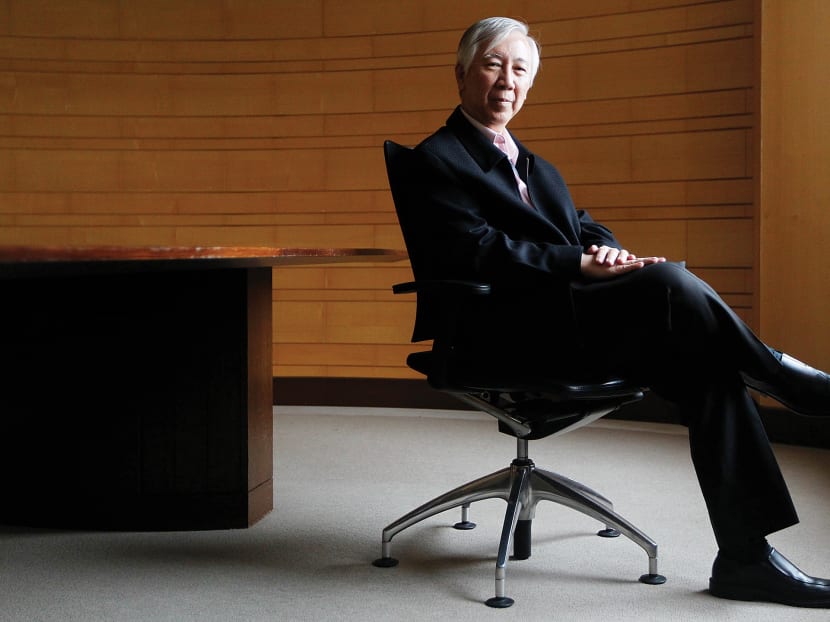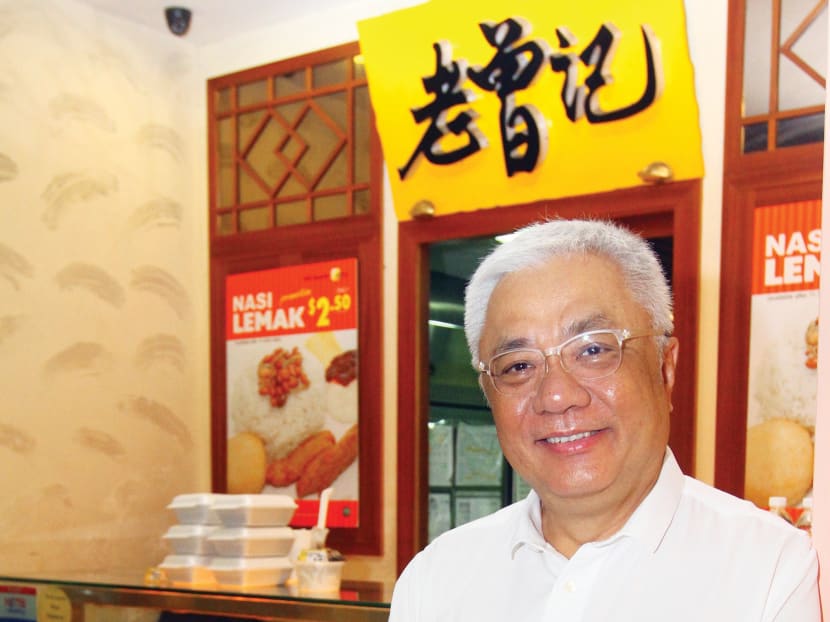Old brands, new strategies
SINGAPORE — Night deliveries, self-service cafes and focus groups to determine consumers’ taste preferences are some steps that home-grown eatery chain Old Chang Kee has taken to remain relevant today, nearly six decades after it started as a small stall near the then Rex Cinema along Mackenzie Road.


SINGAPORE — Night deliveries, self-service cafes and focus groups to determine consumers’ taste preferences are some steps that home-grown eatery chain Old Chang Kee has taken to remain relevant today, nearly six decades after it started as a small stall near the then Rex Cinema along Mackenzie Road.
Similarly, Tiger Balm, a well-known Singapore trademark that is nearly a century old, has struggled to reinvent itself from a brand synonymous with one’s grandparents to one that is more relevant to the current generation.
These are but two local businesses that have managed to fend off the perils of ageing in a competitive market teeming with an ever-increasing number of aggressive young brands.
Old Chang Kee chairman Han Keen Juan can be credited with taking the business beyond a hawker stall, and with a single product — the curry puff.
In 1986, he bought over the stall and has since been responsible for expanding Old Chang Kee into the chain of stores that Singaporeans know today. In the first year after Mr Han took over, he decided to start a central kitchen — a concept he said was alien to most people then.
“In those days, people did not believe in central kitchens. They prepared food on the spot. But to control quality and consistency, you must have a central kitchen,” said Mr Han.
The company also took further steps to keep itself current. Going beyond the familiar takeaway kiosks, it started four dine-in cafes in 2012.
In the face of current challenges such as a labour shortage and the push for productivity, the firm has introduced a self-service concept at four cafes.
“We started the cafes to gain more market share as many Singaporeans like to dine out. Our customers can make payments, including Nets transactions, and collect their food on their own. We cannot just sit there and cry (about our problems),” said Mr Han.
In 2005, the firm introduced a system to track inventory, reduce wastage and monitor performance at its outlets. It also started night deliveries to cater to early-morning customers — reaching them at times such as 4.30am — and food trucks to deliver food to the community for events such as weddings.
Today, Old Chang Kee has expanded to more than 70 outlets across Singapore and several stores in Malaysia, Indonesia and Australia.
To keep up with consumers’ taste preferences, the firm conducts focus groups at least once every three years, with participants ranging from 18 to 60 years of age.
“We invite our customers and people from all walks of life … and ask them how they feel about curry puffs. When we first started, we had no assets except a stall and one product. Now, we have grown that to 24 products and we launch a new item every three months,” said Mr Han.
Similarly, the iconic Tiger Balm brand, owned by Singapore-listed Haw Par Corp, has also taken steps to tweak its products to remain relevant.
Top on its to-do list was to erase the impression that Tiger Balm and its herbal ointments were more suited to the elderly.
Tiger Balm’s executive director AK Han, who was tasked with revamping the brand more than a decade ago, said: “The brand needed to be modernised to make it more relevant to the younger generation.
“At the same time, we needed to retain customers among our older generations. But changing mindsets is not easy. People still think, ‘It’s what my grandfather used’.”
Among the most immediate things the firm set out to do was expanding its product range from a single cure-all ointment to multiple items that targeted various ailments.
“Younger people don’t believe in a product that cures all; only the older people believe (that),” said Mr Han.
The company also started developing products for ailments common in modern life, such as aches as a result of computer usage.
“In the past, people had body aches as they were labouring. But now, sitting in the office, they tend to have colds and aches caused by using the computer,” said Mr Han.
Reinvention has helped Tiger Balm and Old Chang Kee maintain a strong brand presence. Others have not been so lucky, falling by the wayside or fizzling out of collective memory.
Examples include the locally made Setron TV, ubiquitous in households in the 1960s, Magnolia Brrr Blobs and Tiger Lolly ice cream, which were popular with children in the 1970s and 1940s, respectively.
Fraser and Neave (F&N), which acquired Magnolia in the 1990s, said several factors, such as consumer trends, a bid to make healthier products and environmental aspects, go into deciding the changes to make to its portfolio. F&N creates, on average, about five or six new beverage products a year, taking into account new fads for instance, flavours of the moment, such as yuzu, a citrus fruit.
F&N Foods general manager Jennifer See said: “If we are driving a healthier portfolio, it would guide our decisions, as we work very closely with partners such as the Health Promotion Board to plan how to deliver products in line with the national strategy to (help) Singaporeans (stay) healthy.
“Consumers are increasingly more environmentally friendly, so we are constantly looking to deliver environmentally friendly packaging.”
Read more stories in our National Day Special:
- Longing for the good old days
- Preserving memories of a changing nation
- Nostalgia: A force for good, but a double-edged sword?
- Tiong Bahru: A hip and miss affair
- Shops, museums in Katong seek to preserve Peranakan culture
- Town of firsts contemplates modernity
- Balestier’s vintage shops hold on to fading trade
- Heritage buildings given new lease of life
- Newer structures shaping Singapore’s identity too
- Old brands, new strategies
- Businesses stay loyal to their roots
- Singapore’s sporting greats
- Sports: Young guns make their mark
- Sports: It’s all in the delivery
- The A to Z of S’pore’s arts and entertainment scene
- The future of S’pore’s arts and entertainment scene
- #TODAYremembers: An interactive map featuring our readers' favourite memories about Singapore






